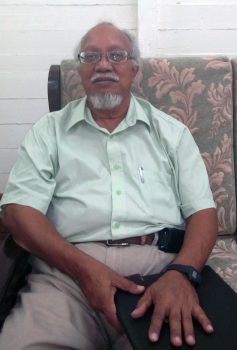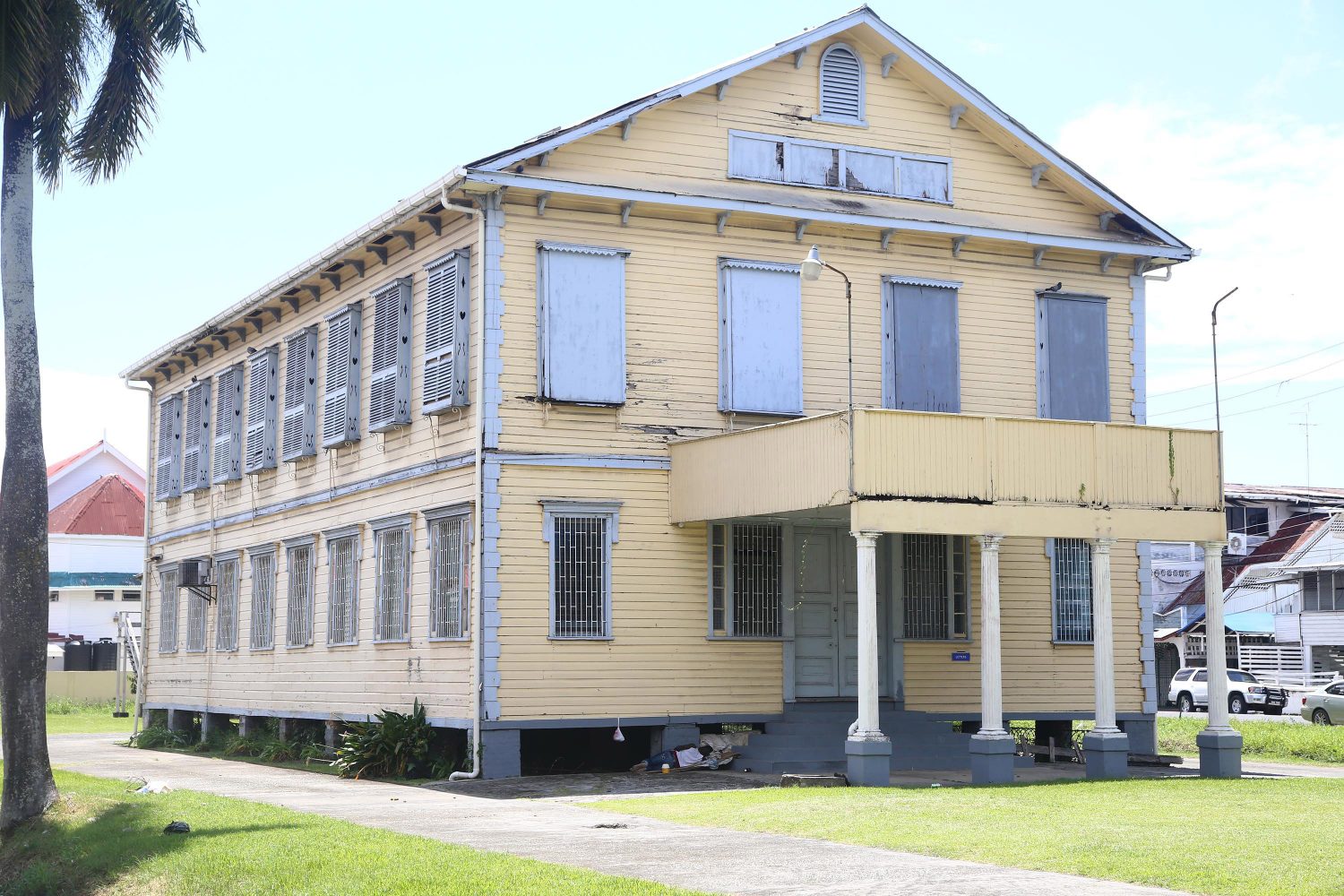No official request has been made by the owner of the historic Freemasons’ Hall for financial assistance to execute needed repairs to the facility, according to the Chairman of the National Trust Board Lennox Hernandez.
“They have never approached us… we have no official request… in writing or otherwise,” Hernandez told Stabroek News recently, while stressing that the National Trust does not own the building and, therefore, is not responsible for its upkeep.
District Grand Master Doodnauth Persaud had told this this newspaper recently that because of the historic significance of the building, the Trust was responsible for it but did not want to give any money to execute the repairs.
The Trust has since clarified that it does not own the building and therefore is not responsible for its maintenance. Based on available information, the Union Lodge is the owner of the building.

Speaking to Stabroek News, Hernandez made it clear that the owners, “whoever they are,” have control of Freemasons’ Hall and, therefore, are responsible for ensuring that it is repaired and maintained.
While acknowledging that he has seen firsthand the deplorable state of the building, he said that it would take millions of dollars to execute the much needed repairs but noted that regular repairs would have prevented the current situation.
He said that the required expertise and materials are available right here in Guyana.
He explained that Freemasons’ Hall, which is historically important because of its age and cultural significance to Guyana, is not a gazetted building but rather one of about 100 structures and buildings on a provisional list. He said that when a building is gazetted, it is approved by the Parliament and becomes known as a national monument.
Hernandez explained that some people do not like to have their buildings gazetted because they think that National Trust is “taking it over” but depending on the significance of the building, the Trust would intervene.
“If it is a really important building, like St. George’s, we are gonna find a way to gazette [it]… I wouldn’t say a building like Freemasons’ Hall we would push for it. But what is there about Freemasons’ Hall that makes it important other than its age? So we have to look at a number of things before we say, ‘Okay, you don’t want to do it but we will do it,’” he said, while making it clear that the roof of the building is not of Dutch design as was stated by Persaud.
He said that Persaud was also incorrect when he told this newspaper that the Trust did not want to give money for the repair works as the Lodge never approached it.
And while he noted that there are non-gazetted buildings that the Trust has helped to repair over the years, he said this depended on the availability of money. “…We have budgeted for this year since last year, so there could be no funds for any other thing other than what we budgeted for, so nobody can’t come and say ‘We want money’ and we can say ‘Okay, we will give you.’ A request has to come in and that request we will probably look at it next year,” he said.
Asked what would happen if the owner wanted to demolish a building such as the Freemasons’ Hall because of the lack of money to rehabilitate it, Hernandez said that the Trust will assist if the building is recognised as so important that it should not be destroyed.
Preservation order
“If that building is deemed to be such then we can actually, though we have never done it before, prepare a preservation order and in effect take over the building. This is where the building is deemed as a landmark…With Freemasons’ Hall, we have to ask ourselves: What makes Freemasons’ Hall so important that we would have to spend so much money taking it over?” he questioned, while noting that the answer would inform a decision. He said that there are buildings just as old as Freemasons’ Hall that were taken down and “we couldn’t do anything about it” because of the absence of funds.
“There are buildings which were demolished… we don’t have the capacity to bring a building back as it should be and I would say that Freemasons’ probably fall into that category. It is old yes but how important is it? That has to be assessed,” he said.
The building, which is located at Company Path, between Church Street and North Road, is known as the Principal Masonic Temple and is a meeting place for the Union Lodge, one of Guyana’s oldest fraternities.
The Endragt Society purchased the Hall in 1807. The Union Lodge took up occupancy of the two-story building in January, 1816. The deed to the property was granted to the lodge on May 10, 1827.
Stabroek News had contacted Persaud about two weeks ago after being reliably informed that the building would be torn down and replaced by a modern structure. This information had caused some amount of concern for persons affiliated with the Lodge, who felt that it should be maintained in light of its historical significance.
Persaud denied that the structure was to be torn down but said that the Trust has expressed an unwillingness to foot the repair bill.
“They don’t want to give us the money. The building falls under them,” he had said before informing that renovation had already started. He did not indicate who had undertaken the financing of the works or how far along they have progressed. He did, however, say that there will be a fundraising drive to help source the necessary funding to execute the much needed work.
According to the District Grand Lodge of Guyana website, under British rule in 1929, Governor Sir Frederick Gordon Guggisburg gave a free grant number 6804 of 1929, to the Worshipful Master and brethren of Union Lodge and their successors of the current property and fixtures provided the building and land were used for Masonic proposes only. “Because of financial difficulties, there were two management agreements for the building first between Union and Concord administered by “Freemasons Hall Building Committee” and secondly between Union, Concord, Mt. Everest, Rorima and Silent Temple lodges, administered by “Freemasons Management Committee” and then eventually in 1970 District Grand Lodge took over the administration of the building. However, title to the land and buildings still remains with Union Lodge,” it adds.





